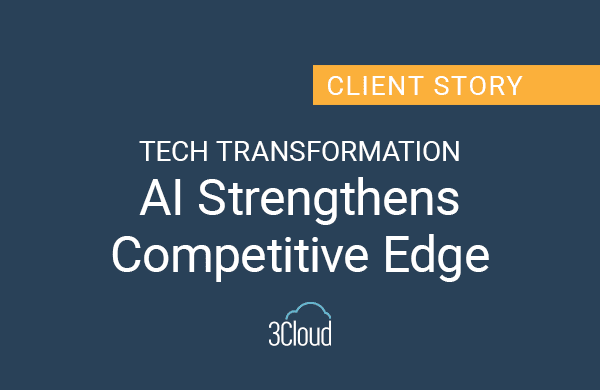Cloud-native app development focuses on crafting applications that are tailor-made for the cloud environment, leveraging cloud services to their fullest. This approach goes beyond simply moving old applications into the cloud; it’s about designing applications that belong there. For businesses eager to explore this transformative approach, starting your journey with the right partner can make all the difference.
Best Practices for Cloud-Native Application Development
Cloud-native application development is about constructing applications that are designed for the cloud from the start. Such applications are engineered to scale up seamlessly, recover from failures autonomously, and embrace updates rapidly and securely. It’s an approach that’s gaining traction among businesses of various sizes, drawn by its promise to enhance efficiency, reduce costs, and improve software resilience.
This involves adopting a microservices architecture to ensure applications are composed of small, independently deployable services, which enhances agility and resilience. Containerization, using tools like Docker and Kubernetes, is pivotal for encapsulating services into portable containers to ensure consistency across development, testing, and production environments.
Implementing DevOps and continuous integration/continuous deployment (CI/CD) pipelines facilitates rapid and reliable software delivery. Emphasizing stateless application design enhances scalability and fault tolerance, while leveraging cloud-managed services, such as databases and messaging queues, can reduce operational complexity.
Security is integrated from the outset, with practices like the secure handling of secrets, regular vulnerability assessments, and adherence to the principle of least privilege. Finally, monitoring and observability are crucial for gaining insights into application performance and user experience in real-time, enabling proactive optimization and troubleshooting.
Our commitment is to demystify complex technologies and deploy them in ways that deliver tangible business benefits. For insights into how we drive innovation and assist companies navigating their digital transformation with cloud technology, check out our App Innovation capabilities.
Understanding Cloud-Native Application Development
Cloud-native application development is a way to build and deploy applications that fully use the advantages of cloud computing. Unlike traditional methods that often require a specific physical environment to operate, cloud-native apps are designed to live in a flexible, online space where they can grow, change, and improve with ease. This method focuses on using services that the cloud offers, such as on-demand computing power and dynamic scaling, to make applications more resilient, scalable, and faster to deploy.
Comparing traditional application development with cloud-native practices:
| Feature | Traditional Application Development | Cloud-Native Application Development |
| Deployment | Fixed on specific servers or infrastructure | Deployed across distributed cloud environments |
| Scalability | Manual scaling, often hardware-dependent | Automatic, on-demand scaling without downtime |
| Development and Update Cycles | Longer, infrequent update cycles | Continuous integration and delivery for rapid updates |
| Recovery and Availability | Relies on physical backups and disaster recovery plans | High availability through multi-region deployment |
| Cost Efficiency | High upfront and maintenance costs | Pay-as-you-go pricing model reduces upfront costs |
The Importance of Cloud-Native Development
A cloud-native approach isn’t just about making applications that can scale up or down effortlessly; it’s about building systems that are inherently adaptable, robust, and quick to evolve. By embracing cloud-native practices, companies can quickly respond to market changes with agility, deploy new features at speed, and ensure consistent performance across global markets. This is made possible by the inherent flexibility of cloud-native architectures, which support a seamless, automated scaling process that traditional setups can’t match.
Companies that adopt cloud-native practices can expect to see improvements in operational efficiency and customer satisfaction, driven by the ability to deploy updates faster and maintain service continuity even under heavy load or during infrastructure upgrades. Cloud-native development transcends mere technical tactics to become a fundamental pillar of contemporary business strategy.
Key Components of Cloud-Native Architecture
The architecture of cloud-native applications is built around several key components that work together to create a flexible, resilient, and scalable environment.
- Microservices are small, independent units that make up an application, allowing for easier updates and scaling that can quickly adapt to new requirements or technologies.
- Containers offer a lightweight, efficient method of packaging and running these microservices, ensuring consistency across different environments, from public and private clouds to hybrid models, without compatibility issues.
- Service meshes provide a communication layer between the services, enabling secure data exchange and microservice management without complicating the application code.
- Immutable infrastructure, where servers and components are replaced rather than changed, enhances reliability and security while ensuring that any system changes are predictable and easily reversible.
- Declarative APIs define the desired state of the application and its components, allowing the system to adjust automatically to meet those specifications. In other words, they tie everything together, enabling automatic adjustments that keep applications resilient and responsive.
These components integrate seamlessly within a cloud-native ecosystem, promoting a robust platform for deploying and managing applications. For businesses looking to build a cloud-native strategy that incorporates these essential components effectively, detailed guidance can provide a roadmap to success.
The Role of Microservices
Microservices play a pivotal role in cloud-native application development by fundamentally changing how applications are built, deployed, and scaled. Unlike traditional applications, which are developed as a single, indivisible unit, microservices architecture breaks down applications into smaller, independent pieces.
Each piece, or microservice, performs a specific function and operates independently of the others. This modularity allows developers to update or scale parts of an application without impacting the whole, facilitating a more agile development process and quicker deployment times. Moreover, microservices are the cornerstone of enabling continuous deployment, where new features and fixes can be released to users more frequently and reliably.
The adoption of microservices significantly enhances an application’s scalability. Because each microservice can be scaled independently, resources can be allocated more efficiently, ensuring that only the components experiencing high demand receive additional computing power. This optimizes the use of resources and improves the application’s overall performance and responsiveness.
Leveraging Azure’s cloud services offers a robust environment for deploying microservices. Azure provides tools and services that simplify managing microservices, from container orchestration with Kubernetes to seamless integration and deployment pipelines.
Containers in Cloud-Native Applications
Containers in cloud-native application development provide a lightweight method to package software so it can run consistently and reliably across different computing environments. Think of containers as self-contained units that hold everything an application needs to run, including the code, runtime, libraries, and settings. This encapsulation ensures that applications perform uniformly, regardless of where they’re deployed—be it a developer’s laptop, a test environment, or a cloud service. Containers facilitate the rapid deployment, scaling, and management of applications, embodying principles of agility and flexibility that are central to modern software development.
The advantages of leveraging containers for cloud-native applications are significant. They provide a level of portability that frees developers from the typical “it works on my machine” problem, ensuring that applications run the same no matter where they are deployed. Additionally, containers promote operational consistency, facilitating smoother transitions through development, testing, and production phases. When orchestrated with tools like Kubernetes, containers can be managed at scale, automatically adjusting to fluctuating demands and enhancing resource utilization. Learn more about cloud-native apps in our introduction.
Securing Cloud-Native Applications
Securing cloud-native applications is a central function where security challenges such as data breaches, unauthorized access, and vulnerabilities within the application architecture are increasingly prevalent. These challenges necessitate robust security measures tailored to the dynamic and distributed nature of cloud-native environments. Effective security strategies must address not just the applications themselves but also the infrastructure and networks they operate within.
To ensure comprehensive security for cloud-native applications, consider the following best practices:
- Implement Strong Network Policies: Define and enforce rules that control the flow of traffic between your services, ensuring that only legitimate requests are processed.
- Use Encryption: Encrypt data at rest and in transit to protect sensitive information from interception and unauthorized access.
- Manage Identities and Access: Employ strict identity and access management (IAM) policies to limit access to resources based on the principle of least privilege.
- Regularly Scan for Vulnerabilities: Use automated tools to continuously scan your applications and infrastructure for vulnerabilities and apply patches promptly.
- Leverage Container Security: Secure your containerized applications by using trusted base images, scanning for vulnerabilities in images, and employing runtime security.
- Adopt a Zero Trust Architecture: Assume no trust by default within your network, verifying every access request as if it originates from an open network.
For organizations looking to deepen their understanding of cloud security and apply these best practices within their cloud-native application development processes, exploring dedicated cloud security resources can offer valuable insights and guidance.
CI/CD in Cloud-Native Development
Continuous Integration and Continuous Deployment (CI/CD) pipelines are foundational for fostering agility and innovation in cloud-native development. CI/CD stands at the core of a streamlined and efficient development lifecycle, enabling teams to deliver code changes more frequently and reliably.
The importance of CI/CD cannot be overstated. By integrating code into a shared repository several times a day and automating the deployment process, CI/CD minimizes manual errors, reduces the time to market, and ensures that software can be released at any time with confidence.
The automation aspect of CI/CD pipelines transforms the software delivery process by enforcing code quality checks, running automated tests, and facilitating immediate feedback loops. Continuous Integration automates the merging and testing of code, reducing integration issues and allowing developers to identify and address bugs early.
Following CI, Continuous Deployment automates the release of this validated code to production environments, ensuring that customers always have access to the latest features and fixes. This seamless automation removes the bottlenecks typically associated with manual deployments. CI/CD allows developers to focus on building features and improving application performance, which drives innovation and enhances user satisfaction in cloud-native applications.
Essential Tools and Platforms
The cloud-native ecosystem is enhanced by a variety of tools and platforms that facilitate the development, deployment, and management of applications designed for the cloud. These tools can streamline the workflow and ensure that applications are resilient, scalable, and secure. Key among these is Kubernetes, Docker, and Istio. When integrated with Microsoft’s cloud services, these tools unlock even greater potential, allowing businesses to leverage the power of cloud computing and accelerate their digital transformation.
| Tool | Function | Alignment with Microsoft Cloud Services |
| Kubernetes | Automates the deployment, scaling, and management of containerized applications. | Integrates with Azure Kubernetes Service (AKS), offering managed environments for easier application scaling, management, and deployment. |
| Docker | Enables development, shipment, and running of applications within containers for consistent environments. | Supported by Azure Container Instances (ACI) and Azure Kubernetes Service (AKS), facilitating seamless containerization and deployment processes without the need for extensive virtual machine management. |
| Istio | Provides a service mesh that controls how microservices communicate, enhancing security, connectivity, and monitoring. | Can be integrated with AKS to enhance microservices management with improved security, monitoring, and connectivity, leveraging Azure’s native controls and observability features. |
Monitoring Cloud-Native Applications
Effective management of cloud-native applications requires a comprehensive approach that encompasses monitoring, logging, and proactive management. Each of these elements plays a crucial role in ensuring applications are not only performing optimally but are also secure and resilient.
- Monitoring: Using tools that provide real-time insights into application performance and health. This enables teams to detect and address issues before they impact users.
- Logging: Implementing robust logging mechanisms to capture detailed information about application behavior and transactions. Logs are invaluable for troubleshooting problems and understanding user interactions.
- Management: Adopting proactive management practices, including the use of automation to manage deployments, scale resources, and apply security patches. This ensures applications remain efficient, secure, and aligned with business needs.
In cloud-native environments, characterized by distributed and dynamic applications and services, the significance of these practices is paramount. Effective monitoring, logging, and proactive management form the backbone of a resilient cloud-native ecosystem, while helping businesses to deliver high-quality services consistently and respond swiftly to changing demands.
For organizations looking to enhance their cloud-native application strategies, partnering with an experienced cloud solutions provider can make a significant difference. From setting up sophisticated monitoring systems to ensuring your applications are always running smoothly, the right partner can help you navigate the complexities of cloud-native environments.
Best Practices for Building Cloud-Native Applications
When building cloud-native applications, especially within the Microsoft cloud ecosystem, there are several best practices to follow that can ensure success. These guidelines leverage the latest in cloud technologies, focusing on creating scalable, resilient, and efficient applications.
- Start with a Cloud-Native Mindset: Embrace the principles of cloud-native architecture from the beginning, including microservices, containers, and dynamic orchestration.
- Leverage Microservices Architecture: Break down your application into smaller, manageable pieces that can be developed, deployed, and scaled independently.
- Utilize Containers for Deployment: Use Docker or similar container technologies for consistent deployment environments across development, testing, and production.
- Adopt Kubernetes for Orchestration: Implement Kubernetes, especially Azure Kubernetes Service (AKS), for managing containerized applications, ensuring they run efficiently, and scale as needed.
- Implement DevOps Practices: Integrate Continuous Integration and Continuous Deployment (CI/CD) pipelines to automate the build, test, and deployment processes, enhancing agility and reducing time to market.
- Incorporate Azure Active Directory for Identity Management: Utilize Azure Active Directory for secure authentication and authorization across your cloud-native applications.
- Utilize Azure DevOps Services: Take advantage of Azure DevOps for better collaboration among development teams, as well as for automating software delivery processes.
- Employ Azure Monitor and Application Insights: Use Azure Monitor and Application Insights for comprehensive monitoring, logging, and application performance management to gain insights and ensure optimal performance.
- Secure Your Applications: Apply Azure Security Center recommendations to protect your applications and data from threats and ensure compliance with industry standards.
- Optimize for Cost and Performance: Regularly assess your application’s resource usage with Azure Cost Management tools to ensure you’re optimizing costs without compromising performance.
Implementing Best Practices
Adopting cloud-native application development practices is a strategic move that positions businesses for greater agility, scalability, and innovation. This involves embracing a cloud-native mindset, leveraging microservices and containers and embedding security and monitoring from the outset. By following the above outlined best practices, organizations can ensure that their cloud-native applications are robust, efficient, and poised to deliver exceptional user experiences.
Whether you’re just starting your cloud-native journey or looking to optimize your existing applications, the right partner will help your company achieve digital excellence. Application innovation enables your organization to discover the power of Azure and transform your apps to be a flexible foundation for the future. Learn more with our Application Innovation Jumpstart today.




